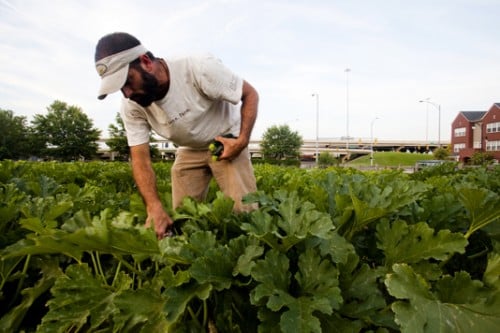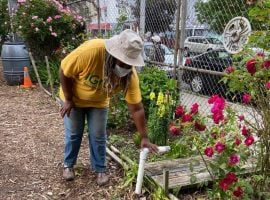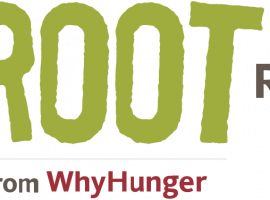This spotlight is a feature in a series of the USDA Community Food Project Competitive Grant Program (CFP). Grantees are doing some of the most innovative and collaborative projects to change local and regional food systems. WhyHunger’s Food Security Learning Center — also funded by a CFP grant — is profiling these organizations through dynamic stories and pictures, to give a real flavor of what the projects look like and how they’re accomplishing their goals. Up today: Jones Valley Teaching Farm, Birmingham, AL. Story and pictures by David Hanson.

Some towns need a revolution more than others. Birmingham, AL, at the turn of the 21st Century, was begging for some fresh ideas. The downtown had been all-but abandoned, a classic American urban food desert where corner stores and fast food were even running scarce.
Edwin Marty grew up in Birmingham, but not downtown. He lived in the nearby suburbs and attended the best schools. When he got the chance, Edwin bolted to the west coast for college and stayed there to learn how to be a sustainable farmer, to sail, climb mountains, surf, and to teach youth in alternative education programs.
But eventually Edwin felt a pull back to his homeland where his ten years of farming and teaching the benefits of healthy living and eating were most needed. So in 2001, just as the country was reeling from the attacks of 9/11, Edwin planted a revolutionary seed in the forgotten soil of Birmingham.
The seeds went into an abandoned lot in Birmingham’s Southside neighborhood, the kind of narrow city lot surrounded by half-burned crack houses and where syringes and beer bottles seem to grow like weeds. He cleaned up the soil and started growing greens and tomatoes and beans and squash, and he sold it, the city’s only local produce at the time, to Birmingham’s pioneering farm-to-plate chefs like Frank Stitt and Chris Hastings.

Read the full profile at the Food Security Learning Center…





